"Our purpose is to dump garbage on your lawn"
– said no CPG company ever

There’s no such thing as “garbage day”
I woke up at 4 am the other day reciting alternative corporate purpose statements to my cat who had been sleeping peacefully on top of me.
There were a few variations, but the phrase that stuck with me was, “Our purpose is to dump garbage on your lawn.” I was repeating it over and over as I came out of my slumber.
Joni blinked at me serenely, indicating I was fine to continue with my somniloquy as long as I didn’t move too much.
Consumer packaged goods (CPG) companies talk about their role in curbing plastic waste as if things are improving thanks to their sustainability goals. Meanwhile in reality, Tuesday is “garbage day” my neighbourhood. The roar of the garbage truck had pierced my pre-dawn reverie, reminding me of how much plastic waste we are dealing with.
As I woke up, I wondered, how is it possible that we have “garbage day” every week? Here in Montreal it is also “recycling day,” but only 9% of Canada’s waste is recycled—like much of the world—so let’s not pretend it’s not “garbage day”. And yet “garbage day” makes about as much sense as “punch your neighbour in the face day”. Every week.
Do companies believe they are going in the right direction? What does the right direction look like?
Imagine not using single-use plastic packaging anymore. That’s what it will look like to have no plastic waste. Thankfully, the innovations—and memories—of what this looks like already exist.
We will know we’re on the right path when the elders tell the youth about those crazy days where we used to have “garbage day”, back when people were lulled into believing it was right and good to heap refuse in front of their homes, and to pay exorbitant amounts to governments to have it hauled off for burning, burying, or otherwise bothering to pretend it went “away”.
This is not about wallowing in the trouble; it’s about winnowing our understanding of what we’re trying to change.
As I discovered in the research for this piece—a review of five CPG companies and their contributions to eliminating plastic waste—global personal care giant L’Oréal, states: “We act to protect the beauty of the planet by fighting climate change, respecting biodiversity and preserving natural resources.”
Yet there is really nothing beautiful about garbage day. And L’Oréal and their peers are the ones making the mess.
Let’s roll up our sleeves and do a little dumpster diving to take a look at plastic waste as understood here in the Matereal World.
Five companies on plastic waste, ten years later
In this Matereal World post, I take a look at five of the world’s largest CPG companies: Coca-Cola, Danone, L’Oréal, Nestlé, and P&G. These companies sell a range of products, but they have in common their reliance on single-use plastic packaging, which is where I focus my attention here.
Quick note for paid subscribers…
For additional context pn the data and a video tutorial of the findings, click here.
Recycling plastic data into reality
Most regular folk don’t have the time or inclination to dive into the details of corporate environmental, social, and governance (ESG) data. Heck, most corporate folks don’t either. Yet corporations pay hefty sums to consultants to conduct benchmarking analyses and other research, to organize and publish this data.
Okay back to this post available for free…
While there are lots more companies, and many other forms of waste, these are five of the biggest on a global scale, and plastic is one of the most serious waste problems in the consumer universe.
I reviewed these companies’ disclosures from ten years ago, compared to their most recent reporting on plastic waste. I sought out what they said they were doing ten years ago, and what they say they’re doing now, trying to understand what, if anything, had changed.
And then I asked: what really needs to change to eliminate plastic packaging waste?
Where did I get the information?
There is a lot of content regarding plastic waste. To keep my head from exploding with overwhelm, I chose my sources as follows:
First, I primarily looked at what the companies themselves disclose in their own environmental, social, and governance (ESG) reporting. I can be fairly sure that their executives, legal counsel, and internal compliance teams believed the information to be true at the time, so it seems reliable in that sense.
Then I reviewed earnings call transcripts (which I source predominantly from Seeking Alpha**) so that I can hear what executives had to say to their investors on the topic. This yielded shockingly little useful information in spite of packaging waste being a “material issue” for these companies, which has major implications for the business model if/when they actually do anything about it. Still I went there to cross-check, to “follow the money” so to speak.
I also referenced the Global Plastics Outlook: Economic Drivers, Environmental Impacts and Policy Options (OECD 2022) as it offered helpful data in a global context.
My research does not take into account NGO campaigns, other academic research, or other anecdotal observations beyond my disturbed morning sleep (although those other inputs matter too, of course).
I chose these five companies because they ranked in a Google search, “Largest CPG companies in the world,” and they had comparable reporting ten years ago and today (whereas other huge companies of relevance to plastic waste such as Kraft/Heinz or AB InBev have had too many structural changes for comparison). However the lessons from these five companies can easily be applied to other peers in the sector.
What did I find out?
The conclusions are very simple. For anyone wanting to dig deeper, I created a brief slide deck with links to more details (PDF for download at the end). Here’s the quick sum of what’s going on with CPG action on plastic waste.
Companies are clinging to the problem while feigning solutions. They declare plastic waste reduction is a priority (even a “material issue”) but their business models are profitable based on goods sold in single-use packaging.
Companies are producing and selling more plastic packaging than ever—not less.
Upon careful review of their sustainable packaging goals, it’s clear they are not planning to change either of these things any time soon.
Let me phrase that another way: global CPG companies are not making the situation better, they are making it worse, according to what they say, and according to what the global OECD data confirms.
My hope and intention with this piece is that, by seeing this so plainly laid out, decision-makers will realize it’s time to make different decisions.
Even the one company (Nestlé) who provided data on overall packaging by volume (vs vague statements or cherry-picked brand stories) disclosed that they placed 330 billion additional pieces of plastic packaging into the marketplace last year. And that was the good news after a reduction of 14 billion from the previous year!
People. That is a crazy amount of plastic. Just stop it. The need is also very simple: we need to reduce the sale of single-use plastic packaging. (Duh.)
Obvious as that statement may seem, this plastics use overview from the OECD report suggests that the number is not going down. Here’s how plastics use looks in recent decades. As this figure suggests, it has increased, everywhere.

Companies are simply not meeting the need. I’m not saying this to lay blame. But let’s not forget they’re the only stakeholder making and selling plastic packaging and earning a profit doing so. It’s kind of on them to stop that.
People may wonder: what about all the recycling efforts? It’s true there has been a lot, but it has not reduced the amount of plastic out in the world. It has contributed to its increase.
The following table from the OECD report makes this abundantly clear, as we see a meaningful increase in secondary (aka recycled) plastic production, doing nothing to supplant the steady increase in virgin plastic production happening in parallel.
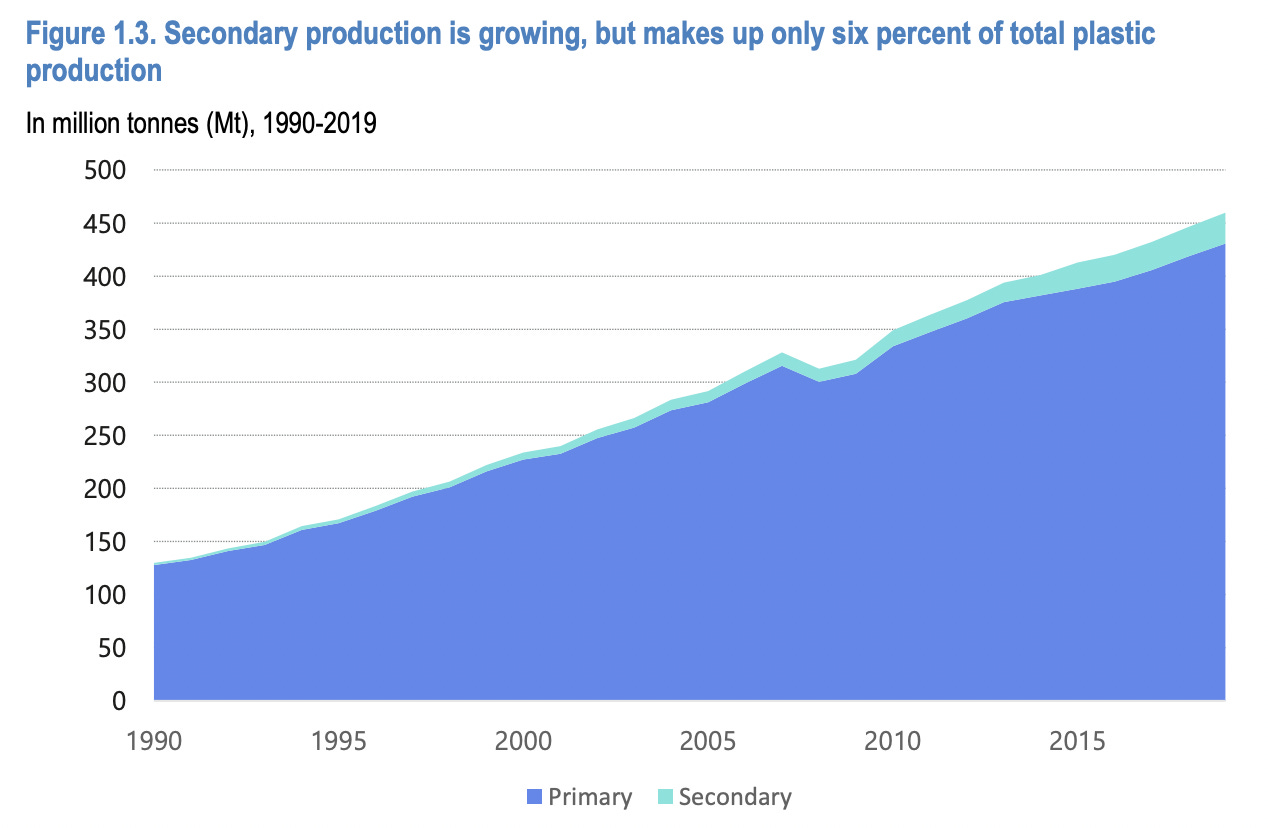
And to put a finer point on it lest people argue, “Well at least it’s recyclable…” this point is moot if recyclable things aren’t actually recycled. As the OECD recycling data makes clear, the vast majority of the world’s plastic waste is either landfilled, incinerated, or “mismanaged” (aka litter).
The plastic waste problem has not gotten better, and the world’s largest companies are not helping. They are directly responsible for its worsening.
What can companies do about it?
Below is a graph illustrating what getting this right looks like from a data perspective. Careful readers will notice a distinctly different trend in the amount of plastic adrift in the world. It’s going down, not up. All the way down in fact.

Many of us have living memories of a life where this was true, so we know in our heart of hearts that this is an entirely possible future. The difference between it and our current lived reality is one of choices. Strategic, industrial choices, not more citizen education choices or beach clean-up choices.
For companies involved in producing and putting all this packaging waste in our homes and subsequently our front yards (literally and metaphorically, for those of us without physical front yards), the next steps are clear.
Set targets that mean there is significantly less plastic produced and sold.
Change the business model so that no revenue comes from plastic waste.
If the above feels too drastic, then at a minimum companies need to stop pretending what they’re doing is helping. They need to come right out and say:
“This is how we make our money: we sell stuff you probably don’t need, and we leave a lot of waste behind that we have no plans to deal with. Take it or leave it. [optional: Sucker.]”
But if they are serious about reducing waste, then they need to stop making money from producing waste, and then get on with making real change. I have met some of these people. They are crazy smart. I have no doubt they’re more than capable.
Ten years on: CPG companies’ goals + results
Following are observations from the five CPG companies I reviewed, in alphabetical order. I include commentary on a visual from their own reporting, and then a table I created to compare their 2013 goals on plastic waste against their most recent reporting on the same issue. As much as possible I looked for progress on the exact same goals, for an apples-to-apples comparison.
NB: I did this without input or direction from an any corporate entity. I did my best to be comprehensive and accurate, but I am human, and there is a lot of material out there! If you see errors let me know (in a public comment, or get in touch directly). Thank you!
Coca-Cola didn’t plan to reduce plastics, and still doesn’t
Company vibe:
In Coca-Cola’s 2013/2014 sustainability report we get the warm and fuzzies about all the great things they’re doing, as this cheery infographic suggests. Their plastic goals ten years ago were focused on switching out virgin plastic for recycled material, and taking a more active stance in making that possible through better recycling infrastructure.
None of this ever suggested “less plastic” as far as I could find.
Matereality check:
As noted on page 30 of their 2022 business & sustainability report:
“…growth of plastic packaging has outpaced efforts on lightweighting and use of recycled content.”
In other words, they’re selling more plastic packaging than ever and this seems to be according to plan. I don’t feel like this is opening happiness.
Danone not regenerating, then and now
Company vibe:
Danone’s 2022 integrated report includes beautiful scenery and words that suggest nature is being regenerated by the company’s actions. Danone has become known in recent years for pushing regenerative agriculture, which would seem promising for their impacts overall.
Matereality check:
With new leadership in 2022, their regenerative ambition seems to be stalling or even back-pedalling. As I learned in a detailed Matereality Assessment, their business model (as with their sector peers) is based on degeneration, including producing a lot of plastic waste.
Their goals on plastic were vague and not tied to reduction ten years ago. Their plan to pilot a program in 2022 that potentially eliminates packaging for one brand seems promising. But without serious signals from executives that this is fundamental to their strategy, this feels like a recycled goal that leads to more waste.
L’Oréal’s plastic waste ambitions barely skin deep
Company vibe:
During L’Oréal’s Q4 2022 earnings call, CFO Christophe Babule notes:
“In 2022, L'Oréal was once again rewarded for its social and environmental performance and recognized among the best companies in the world by nonprofit organizations, rating agencies or international bodies, all leading in their respective fields.”
The company certainly presents an alphabet soup of sustainability and ESG achievements in their 2022 Social & Environmental Performance report to support this claim.
Matereality check:
Later in the same Q4 2022 earnings call, CEO Nicolas Hieronimus states what seems to be more to the strategic point here:
“We have the number one beauty brand in the world. We have the most prescribed brands by either skin professionals or hair experts. We have several of the most coveted luxury brands and we have brands at all price points and for all tribes and generations, including those loved by Gen-Z.”
Scanning the brands that have seen double-digit growth as mentioned during the call (Laroche-Posay and CeraVe, for example) to look for disclosure on plastic waste reduction, I found no clear progress indicators—in spite of a commitment to publish brand-by-brand reporting starting ten years ago. More concerning still, I noticed that their most ambitious recent goal (that 100% of ingredients for formulas and packaging materials will come from sustainable sources), upon closer review, doesn’t include packaging.
My face hurts trying to make sense of this. I will not apply a skincare product to address this pain.
Nestlé shows “less” plastic than the previous year, but…
Company vibe:
Nestlé has been in the business of providing very detailed ESG reporting for longer than most of their peers. I am grateful that in the last ten years they have managed to cut their report from 404 pages to 64, because with all that data and text, it was tricky to figure out what their goals actually were, and how they are tracking on them.
In a more positive light, they were the only company whose disclosures I could find that state how much of a decrease in total volume they were responsible for.
Matereality check:
In spite of that good news, there were a couple things that bear a reality check here. First, for all the detailed reporting, they disclose that they’re not disclosing in alignment with the Ellen MacArthur Foundation definitions. It wasn’t clear where and how they vary nor—more to the point—what that means in terms of impact.
Secondly, although it is refreshing to see the volume figures clearly stated, what they state is horrifying. With all these years of considering packaging one of their most material issues (see materiality matrix on page 16 of 404 of their 2013 report), they’re still responsible for pumping well over 300 billion pieces of plastic on the market annually. They show data for how “recyclable” all that plastic is, but to repeat (see OECD graphic above) only 9% is recycled globally.
This company statistic of 85.5% “reusable, recyclable, or compostable” is misleading.
P&G changed the goal, not the model
Company vibe:
Their ten years ago report and their most recent one are easy to read and full of smiling, happy people enjoying iconic brands. From the look of their “Environmental Sustainability” intro page (below) one could be forgiven for thinking they are the stewards of riparian habit, not a USD80 billion purveyor of products that have nowhere to go once the consumer has finished with them. (Google “polluted river/images” to see another riparian vista with a lot of plastic waste.)
Matereality check:
Reviewing P&G’s plastic waste efforts was particularly heart-breaking. They were the one company that seemed publicly committed to reducing the amount of plastics they were putting out there 10 years ago, even if only by 20% and only per consumer use, not in absolute volume.
Yet in their most recent reporting, that goal simply went away. Their 2013 report seemed to foreshadow what was to come:
“While we are currently on track to meet our 20% reduction goal for 2020, the work will become more difficult as we achieve optimized packaging design…”
It seems it became so difficult that they dropped the goal, instead of changing the business model to be able to meet it.
Let’s be realistic
Some people might push back and say that I need to be realistic. I totally agree. And I’d offer that it’s not realistic to live in a world where companies are rewarded for profiting from pollution. It is way more realistic—real, reality-based—to be rewarded for enabling life to thrive.
Not to mention, disruption in the name of radical change for the better seems a heck of a lot more compelling than defending a broken model just because it’s hard to change.
I sincerely hope making this gap so obvious doesn’t lead to so-called greenhushing, where companies become reluctant to share data because pesky people like me scrutinize it and hold them to account.
I hope instead that this prompts companies to get serious about the changes they seek. I sense a genuine intention to eliminate plastic waste among many business leaders. Now would be a good time to get real about that intention.
See things differently? Notice an error? Want to vent about the garbage on your lawn?
* Special thanks to Kristin Sjaarda whose photography and approach have inspired me for many years. I’m grateful to look at this photograph in my office every day, and I’m honoured to be granted permission to share the image here.
** It can be hard to find investor call transcripts but I have a go-to spot, Seeking Alpha. Instead of wasting time scrambling around company websites, I go straight there. This is an affiliate link—if you sign on to the premium version (which I did years ago and have been very happy with it—hence becoming an affiliate the other day) I earn a small commission. I recorded a conversation with my friend and colleague, Geoff Kendall about how to find these sorts of disclosures in case that’s helpful.
Deck with details for download:
This 15-slide deck includes clickable links to all the reports and data referenced, as well as five company overviews explored above.
Questions? Feedback? See an error? Please comment publicly on the post, here…
… or reach out directly to me here: https://www.blorrainesmith.com/contact-me
Thank you. :-)



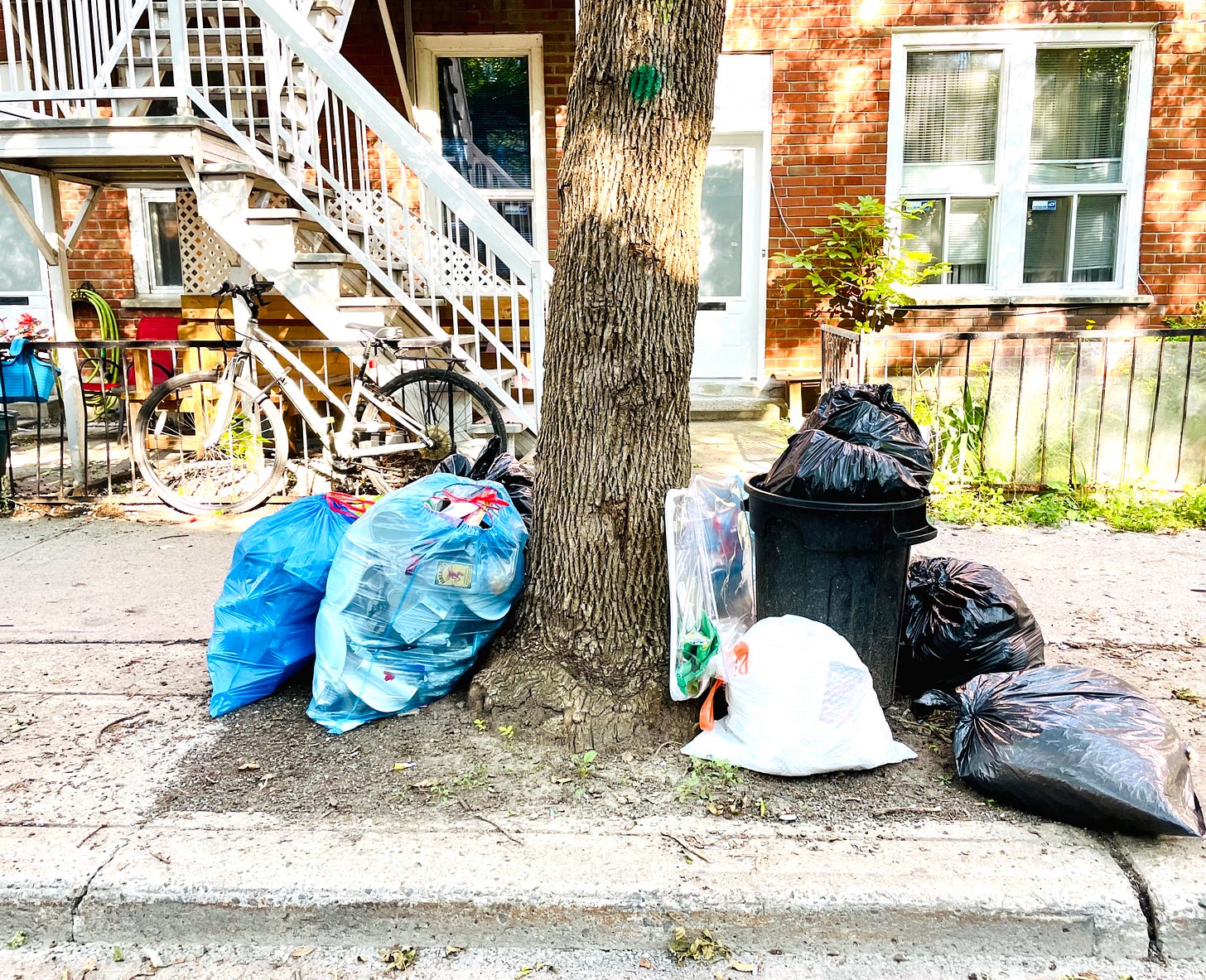




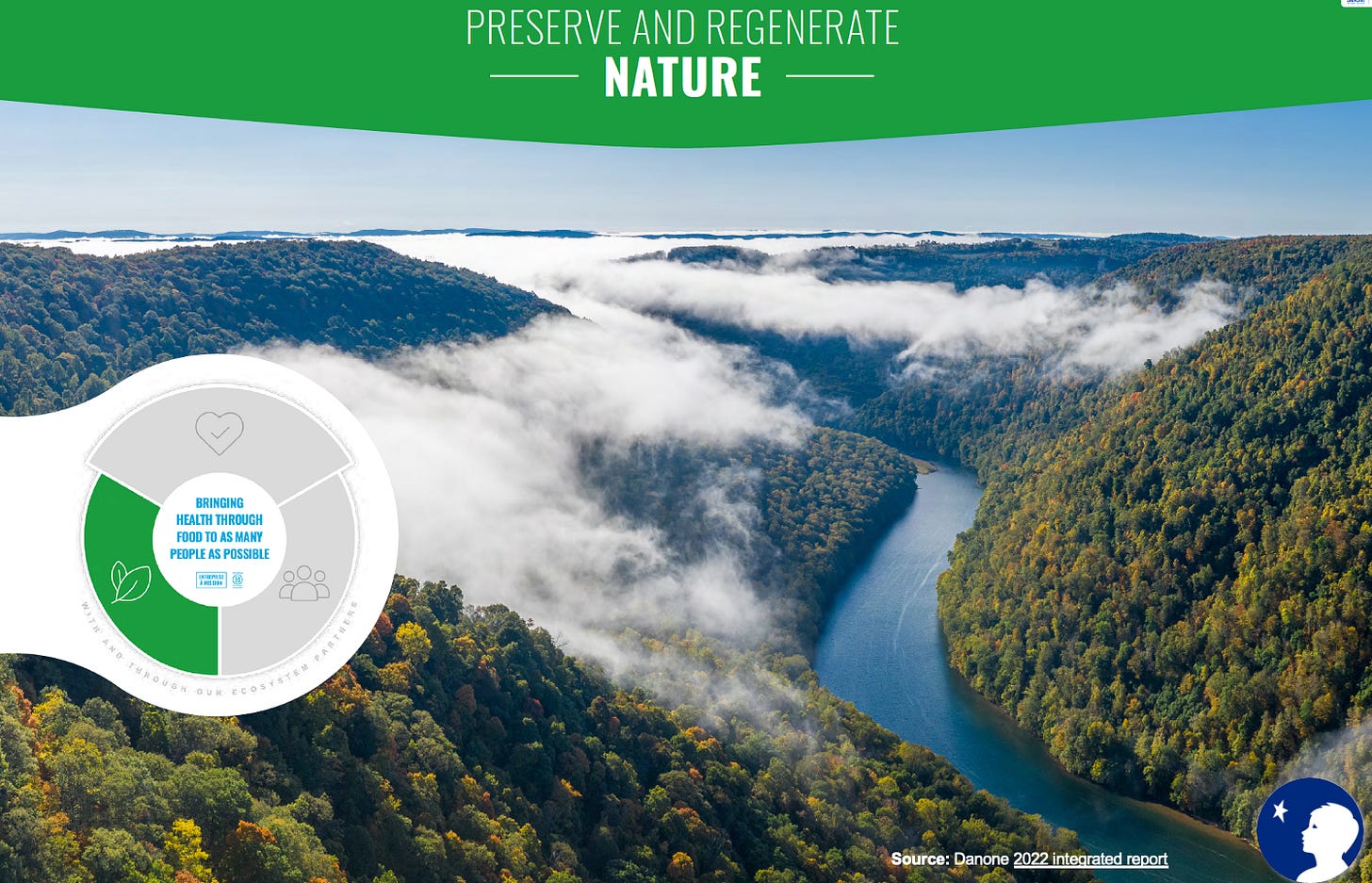


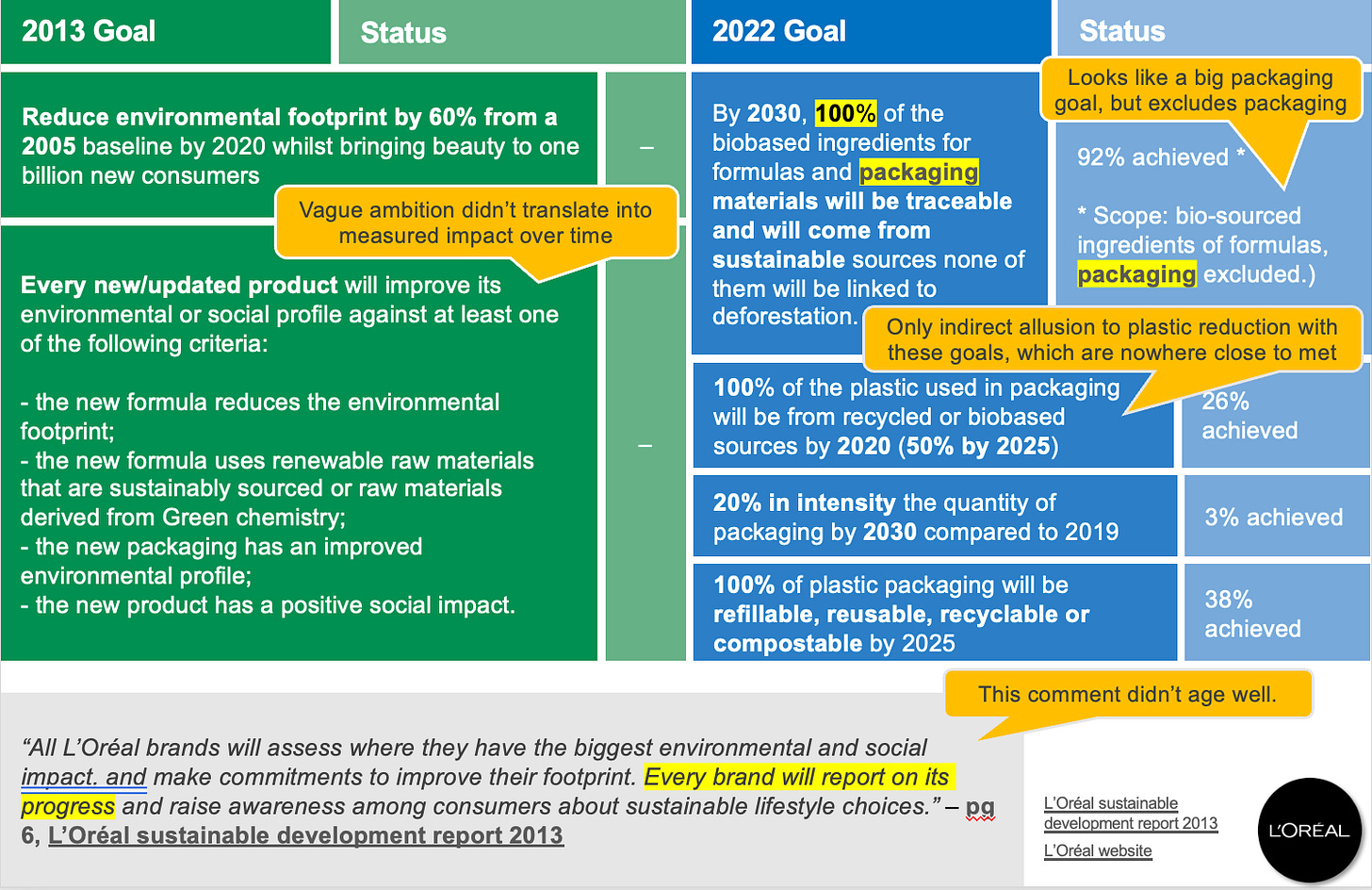


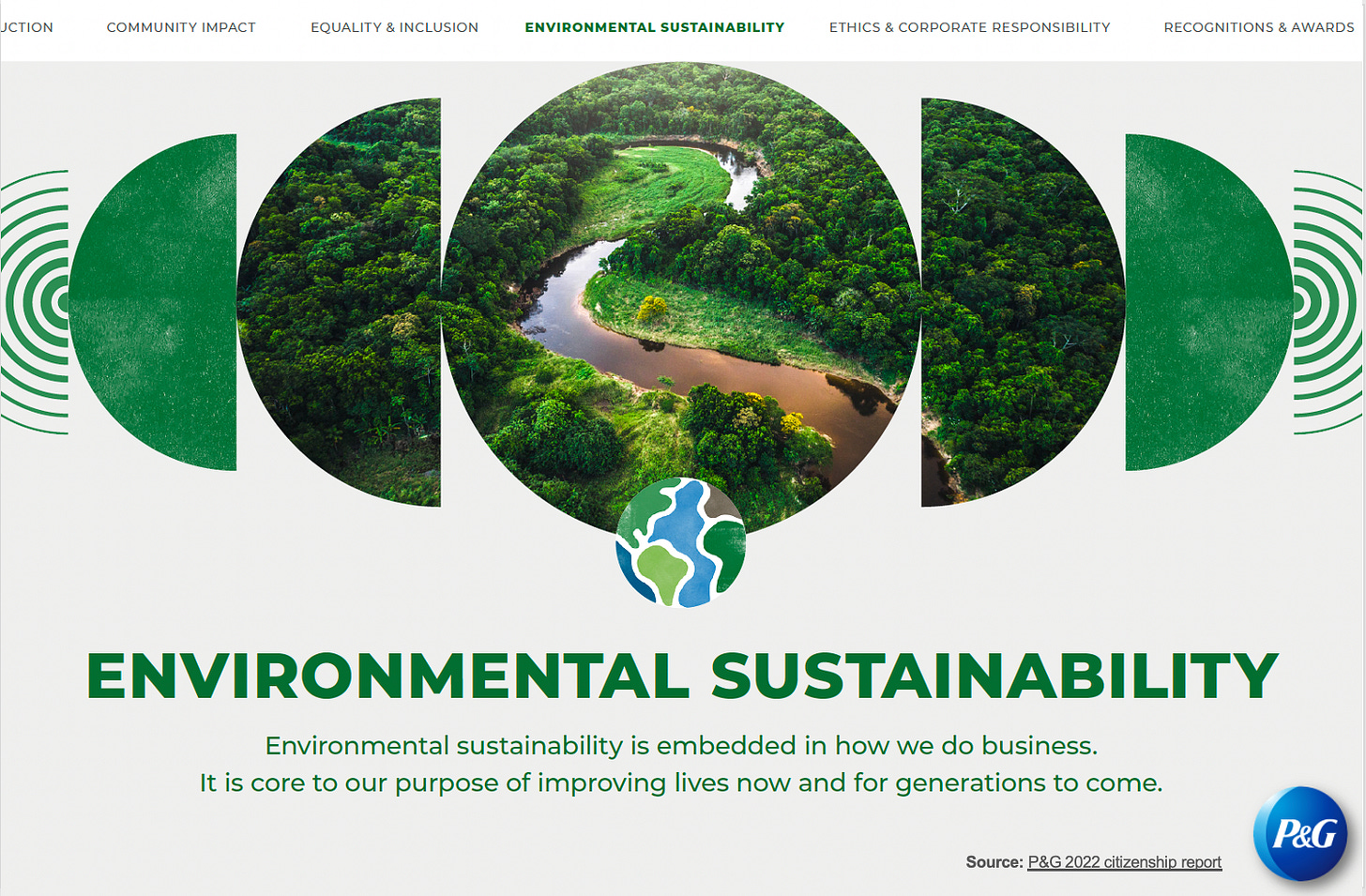

Powerful, data-led and reality informed. Thx for sharing Lorraine
Singularly the most fantastic plastic analysis and call-in to single-use plastic giants I have read. You are a life-force!